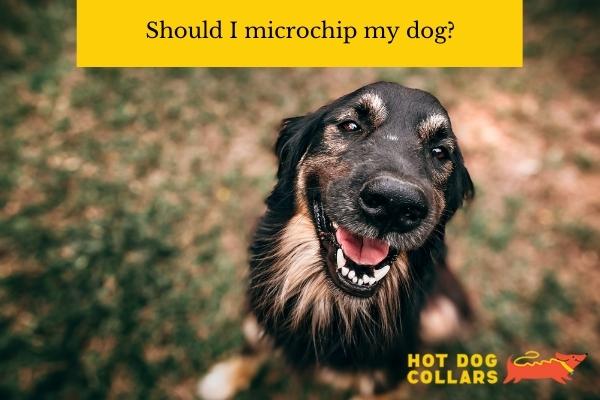Should I microchip my dog?
05/04/22 9:53 AM
Yes.
That’s the short answer. Let’s get into the longer answer about why it’s smart to microchip your dog.

Microchips Work
First, do microchips work?
They do. The purpose of the microchip is to ensure your dog can always be identified so that they can be returned if you become separated. Research shows that microchipped dogs are approximately 2.5 times more likely to be reunited with their owners that dogs without microchips. (That figure is even higher for cats with microchips – they are 20 times more likely to be reunited!)
How a Dog Microchip Works
A microchip is tiny computer chip, about the size of a grain of rice, that’s injected under a dog’s skin between the shoulder blades. Owners may worry that a microchip will be painful for their dog, but the injection takes just seconds, and the microchip is so small that it doesn’t cause any discomfort long term. It’s also inexpensive, costing less than $50 on average for a microchip injection.
Once the microchip is injected, the dog owner should register the microchip with a database (which can easily be done online and for free) so that the information on the chip – a unique identification number – is associated with the owner’s name and contact information.
When a stray dog is brought to a veterinarian’s office, animal control department, or shelter, the microchip is scanned with a special scanner to retrieve the unique identification number. If the microchip has been registered, it’s easy to then contact the owner. If the microchip has not been registered, it may be difficult or impossible to reunite the dog and owner, which is why it’s important to keep microchip registration and information up to date.
What a Microchip is Not
A microchip is not a GPS device. It does not continuously send information about your dog’s whereabouts to satellites (or anywhere else), so you can’t expect to track your dog’s movements in real time via their microchip.
A Microchip is One Piece of the Puzzle
Microchipping your dog is inexpensive, painless for your dog, and, most importantly, it improves the odds that you’ll be reunited with your dog if they ever run off or become lost. Although it’s not a perfect system, there are really no downsides for you or your dog. If your dog doesn’t yet have a microchip, make an appointment with your vet to get it done!
But a microchip shouldn’t be your only line of defense if your pet goes missing; in addition to a microchip, make sure your dog is always wearing a collar and that their ID tags have current contact information. These low-tech items are also effective at helping reunite lost pets with their owners.
Find the perfect collar for your dog at Hot Dog Collars; we have hundreds of dog collars in all kinds of colors, designs, and styles, including over 180 that can be personalized with your dog’s information, plus hundreds of dog ID tags for your dog’s safety and your peace of mind.

